I love Wellington. I love its diversity, its history and quirkiness. Gareth, on the other hand, isn’t fond of navigating the roads, not to mention the street parking on the narrow and winding hills. Even so, Wellington is one of those places to which we always find ourselves coming back.
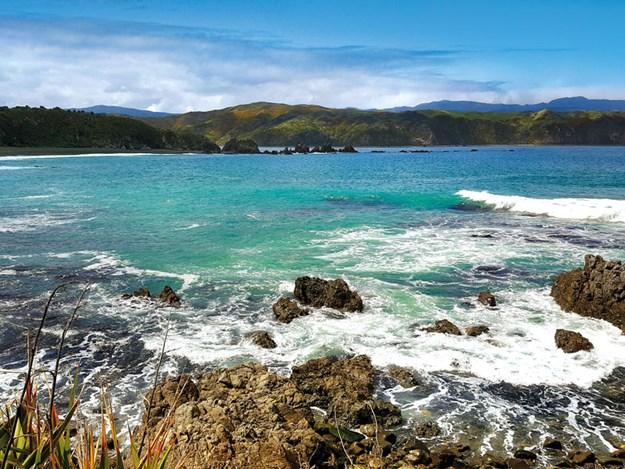 |
|
Breaker Bay is ruggedly beautiful and unspoilt |
There’s an unbelievable amount to do, much of it is free and, best of all, my eldest son Liam (23) lives there. We caught up with him recently and visited two different but equally rugged and beautiful spots.
Where the harbour meets the strait
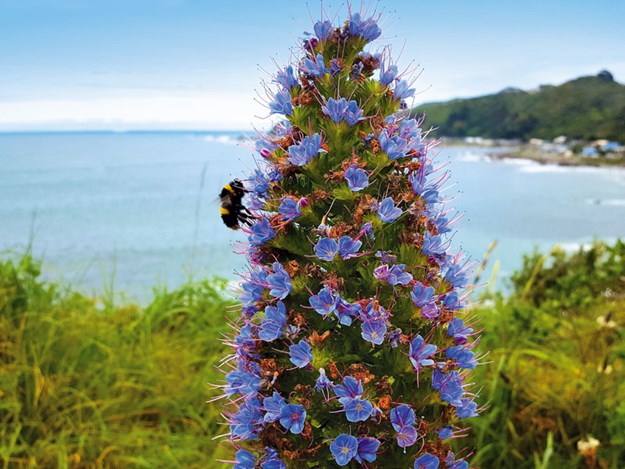 |
|
Enjoy 360-degree views from Point Dorset |
Breaker Bay is at the western entrance to Wellington Harbour. This picturesque cove is a 600m-wide turquoise crescent and is part of the award-winning Oruaiti Reserve. The beach itself is pebble and shingle, sheltered by densely forested hills, with a photogenic natural archway at one end through which you can walk.
As it turned out, Liam had purposely planned our visit here on an overcast and none-too-warm day.
“We should be safe today,” he said, revealing that Breaker Bay is infamous for having the only ‘clothing-optional’ beach in Wellington. He was right, no brave souls were game enough to bare all in such conditions.
“No matter anyway, we’re going up there.” He pointed to a walking track that led uphill.
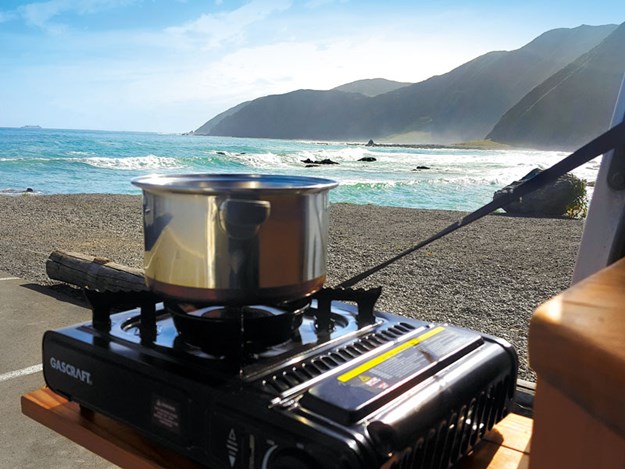 |
|
Breaker Bay is rugged and unspoilt |
Up the escarpment we climbed, along the well-formed track to the ridgeline to Point Dorset. From up here, you can see it all. On one side, are the inter-island ferries passing by between the North and South Islands. From the other, you can see the planes coming into land at the nearby airport.
And, in another direction again, there are stunning views across the harbour entrance to Pencarrow Lighthouse, as the rolling thunder of waves coming in from Cook Strait crash and break over rocks that have sunk more than a few ships. This is where the bay becomes as interesting as it is spectacular.
The top of the ridge above the beach was once a pā site. The remains of gun emplacements and bunkers can be found on the ridge near the Pass of Branda and on the coast inside the harbour entrance. These historic sites once served as lookout posts for invaders from Māori times to World Wars I and II.
As we climbed up, down and around, stood inside and looked out, it was all too imaginable and sobering to picture those who had held these posts before us, for real. We stayed there a while, inhaling the sea air and our surroundings, before eventually making our descent.
The return trip along Breaker Bay Road back to the car park is a pleasant coastal walk. For Liam, who had lived around the corner for the past two years, our adventure was quite a surprise. “If I’d known it was that awesome up there, I would have done it ages ago.”
A glorious mix of history and scenery
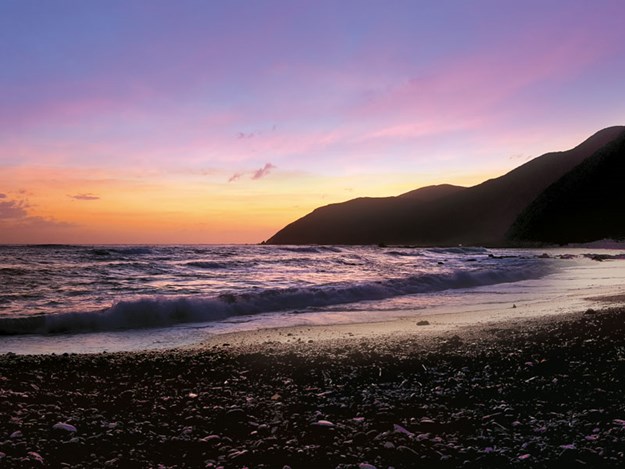 |
|
Enjoy an evening stroll along Red Rocks |
As soon as I heard the name Red Rocks, my curiosity was piqued, and I had to go and check it out. This easy coastal walk is hugely popular, especially on weekends, but there’s more than enough room for everyone. To get the most out of it, and increase your chances of seeing fur seals, I would recommend putting aside half a day.
|
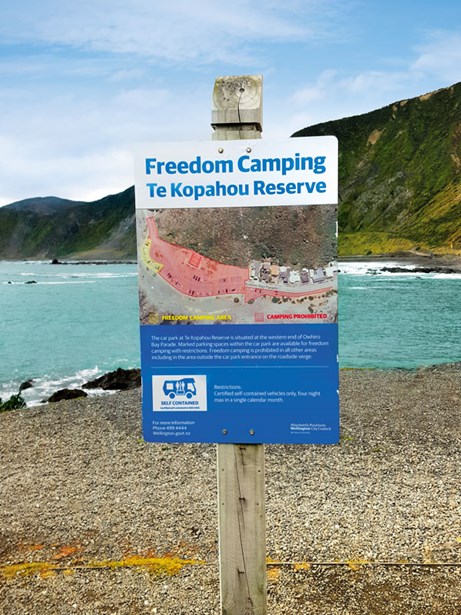 Owhiro Bay’s camping area overlooks the sea |
Park at the Owhiro Bay car park and head towards the Red Rocks Reserve. You can either walk along the gravel track, which is shared with 4WD vehicles, or on the pebble beach, which is great for beachcombing.
We ended up visiting Red Rocks three times during our time in Wellington and each time was vastly different. No matter the weather, the coastline always looks dramatic, from dark and brooding to shining and vibrant.
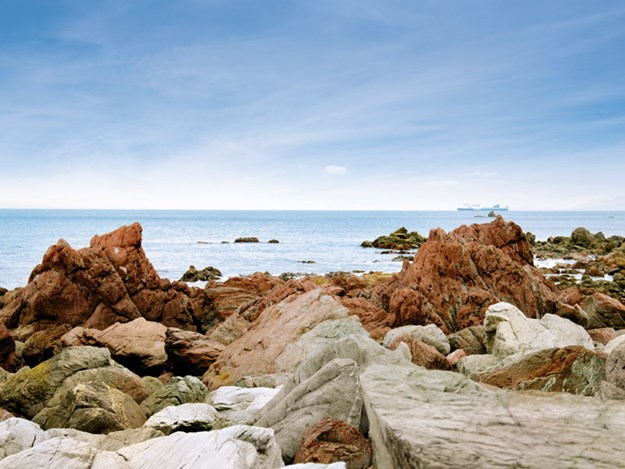 |
|
The deep-red rocks are truly fascinating |
The entire area is covered with unusual and fascinating rock formations of ancient volcanic rock, greywacke, and red and green siltstone. It’s an area of national significance, full of Māori history. The Red Rocks themselves are ancient pillow lava formed 200 million years ago by undersea volcanic eruptions.
Small amounts of iron oxides give the rocks their distinctive red colouring. However, I prefer the stuff of legends. There are not one, but two stories according to Māori folklore as to how the Red Rocks got their colour. In one, Polynesian explorer Kupe was gathering pāua there when one clamped his hand, and he bled.
The other, more well-known, tale says that Kupe’s daughters were so grief-stricken when their father did not return after a long voyage, they gashed themselves and their blood stained the rocks forever.
Whatever version of legend you’d like to believe, there’s no denying there’s an uncanny air about the place. The track carries on past the rocks to Sinclair Head, where there is a permanent seal colony, although your best chances of seeing them are from May to October.
A small group of historic batches built in the early 1900s can be reached by the coastal track and further around the coast there are some excellent views from gun emplacements and lookouts built during the major wars.
This rugged, unspoiled area is not a place you want to hurry and the good news is, you don’t have to. There is an excellent free-camping area right at the entrance, in the car park. Talk about a sea view; you couldn’t wish for a closer spot to the beach, with the waves crashing onto the shore directly below us.
We sat on the rocks with Liam, tucking into hot chips and chatting to fellow campers and motorhomers from all over the world, watching the sun go down. It was a memorable way to spend our last night in the North Island, before leaving early the next morning to catch the ferry. An excellent place to spend time and stay, Red Rocks is at the top of our list when we return to Wellington.
Find motorhomes for sale in NZ 



 Owhiro Bay’s camping area overlooks the sea
Owhiro Bay’s camping area overlooks the sea





